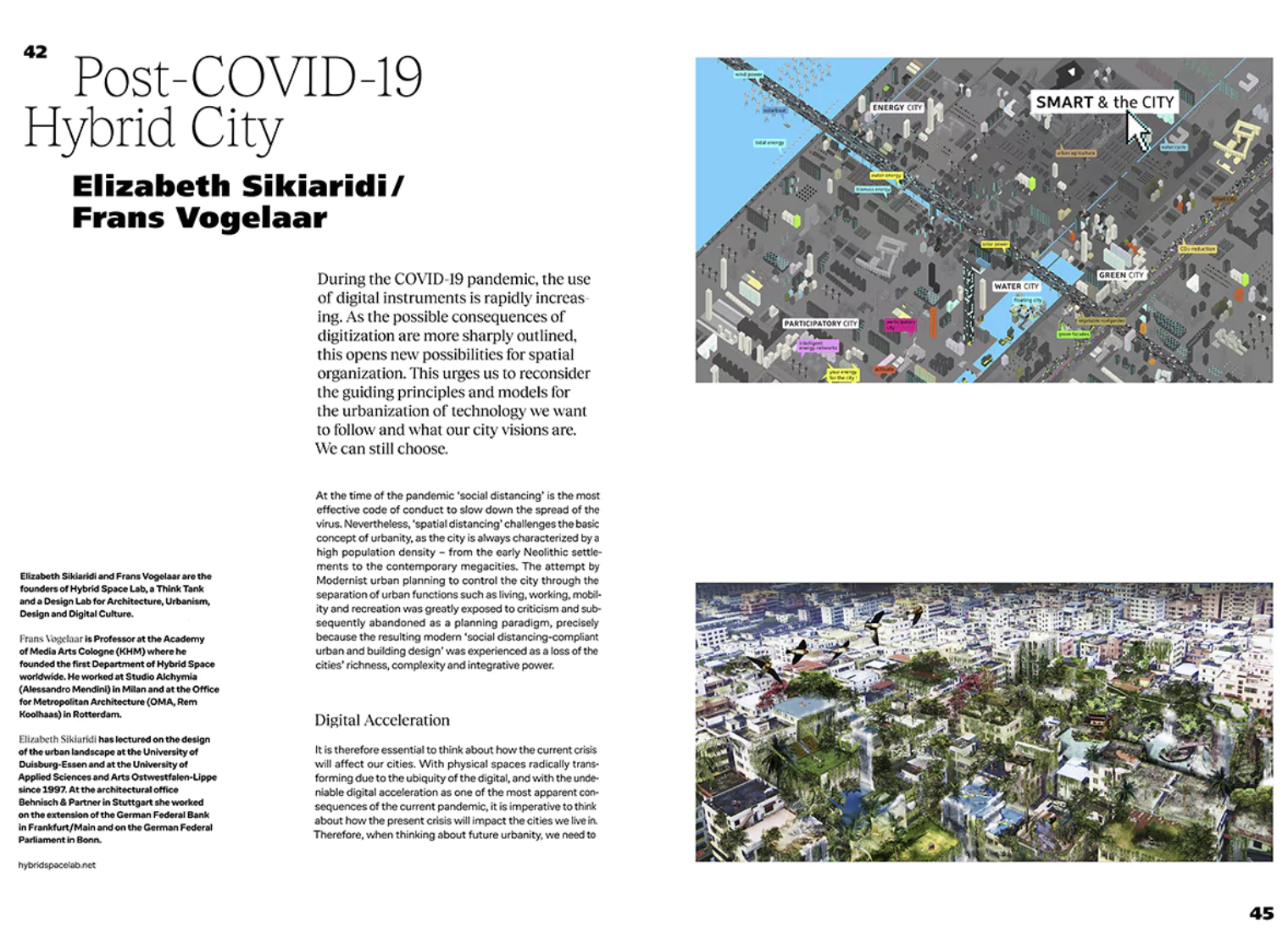During the COVID-19 pandemic, the use of digital instruments is rapidly increasing.
As the possible consequences of digitization are more sharply outlined, this opens new possibilities for spatial organization.
This urges us to reconsider the guiding principles and models for the urbanization of technology we want to follow and what our city visions are.
Publication Post COVID-19 Hybrid City @ Academy of Media Arts, KHM #0 Magazine, Cologne, Germany, 1 July 2022
Publication Recht auf hybride Stadt @ Marlowes Online-Magazin für Architektur und Stadt, Stuttgart, Germany, 20 May 2020
At the time of the pandemic Social Distancing is the most effective code of conduct to slow down the spread of the virus. Nevertheless, Spatial Distancing challenges the basic concept of urbanity, as the city is always characterized by a high population density – from the early Neolithic settlements to the contemporary megacities. The attempt by Modernist urban planning to control the city through the separation of urban functions such as living, working, mobility and recreation was greatly exposed to criticism and subsequently abandoned as a planning paradigm, precisely because the resulting modern ‘Social Distancing-compliant urban and building design’ was experienced as a loss of the cities’ richness, complexity and integrative power.
The polarity in the implementation of digital technology reflects alternative models for the digitally networked – the hybrid – city. Smart City is mostly aiming at the optimization of urban functions. This approach, borrowed from information technology, focuses on the enhancement of the efficiency of urban systems and with the collection of data facilitates the quantification of urban phenomena.
This contrasts with the Smart Citizen approach that relies on the process-oriented tools of urban tech for involving the citizens in shaping the urbanization of technology and their environments. Because of an approach powered by communication technology, our urban systems can account for greater complexity, enhancing citizens’ possibilities to participate. Consequently, the resulting landscape is enriched beyond the optimally networked urban scenario, fostering negotiation, and promoting the activity of intelligent collectives.
Whilst acknowledging the important role played by optimization in rising to challenges posed by urban management and resilience at large, such as sustainability, mobility, health and security, it is important to question for whom urban functions are optimized for, as optimization processes can intensify inequalities. It should also be borne in mind that the qualities of urbanity are based on the functional, social and cultural richness and complexity of cities – and thus on this very richness enabling ongoing urban negotiation processes.
Digital technologies can support control and optimization as well as interaction and participation. Digitization can enable the transition from centralized to interactive, decentralized social networks. Urban tech tools can facilitate urban participation processes that involve citizens in shaping their environment.
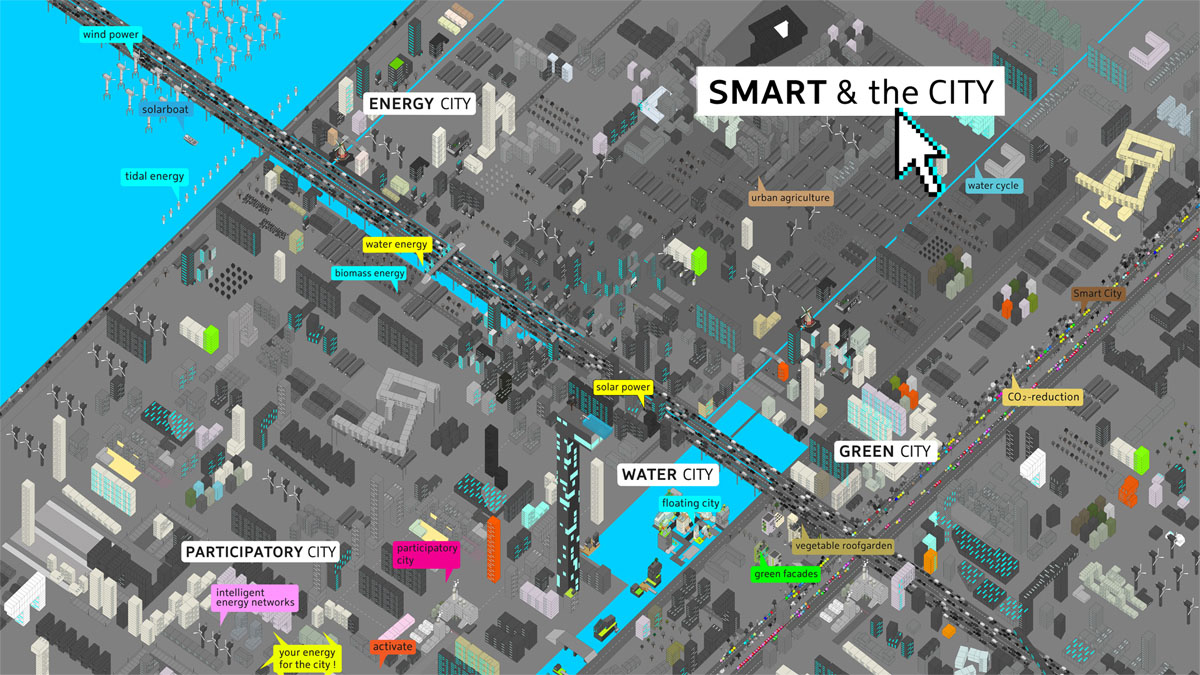
It is therefore essential to think about how the current crisis will affect our cities. With physical spaces radically transforming due to the ubiquity of the digital, and with the undeniable digital acceleration as one of the most apparent consequences of the current pandemic, it is imperative to think about how the present crisis will impact the cities we live in. Therefore, when thinking about future urbanity, we need to consider the digital spaces and networks that form our relationships – next to the physical spaces of cohabitation and encounter.
Today, the required and necessary physical Social Distancing causes an unprecedented acceleration of the pervasiveness of information and communication technologies. Social interactions increasingly rely on the digital sphere. With restricted and highly regulated access to shops, e-commerce and delivery services are taking over; as long as cultural spaces and sport facilities are not fully open to the public, remote viewing, online fitness classes, e-conferences, live-streamed music gigs and virtual museum tours and exhibitions become the norm; in-person meetings are replaced by teleconferencing; schools and universities are transitioning to online teaching and e-learning and ever more office work is carried out from home.
With the lifting of the pandemic-induced lockdown and restrictions, these new digital formats will continue to evolve. The newly acquired online habits – backed by economic interests – will most probably remain, becoming the new normality. The lockdown revealed and amplified the need for easy-to-monitor physical spaces such as homes and private open spaces and this will play into the cards of digitization. For example, flat rooftops will increasingly be used in dense urban situations but crucially, suburban areas and rural regions will acquire a more prominent role, as they will become dwelling places from which we will occasionally drive to the office and for the rest work from home, relying on digital tools to participate in social life.
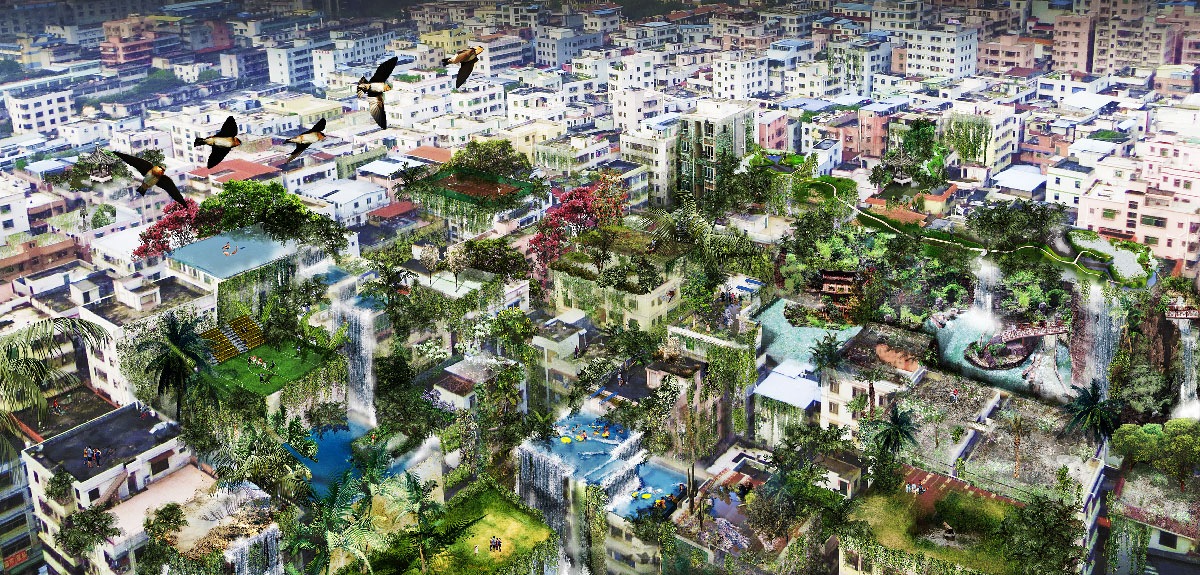
Today’s emergency causes a strong and partly unquestioned and unreflective acceleration of these developments. But it is often overlooked that in the context of increasing digitalization, alternative social and urban approaches open opportunities for the design of technology. In this crisis, citizens not only accept restrictions to their physical movements and encounters but also consider their digital tracking as well as the possible monitoring of their health. Responding to the pandemic, digital control tools are being refined to enable (Big) Data-based prediction models and simulations. Nevertheless, digital instruments can also support and enable communication and co-creation, addressing the citizens’ responsible empowerment.
Therefore, we should not only question whether we would be happy with a life taking place mostly online. Ever more importantly, we should consider for which ends and with which means we want to use digital technology and how (smart) citizens can forge meaningful social interactions, as digital instruments can support proliferating bottom-up solidary initiatives by the civil society.
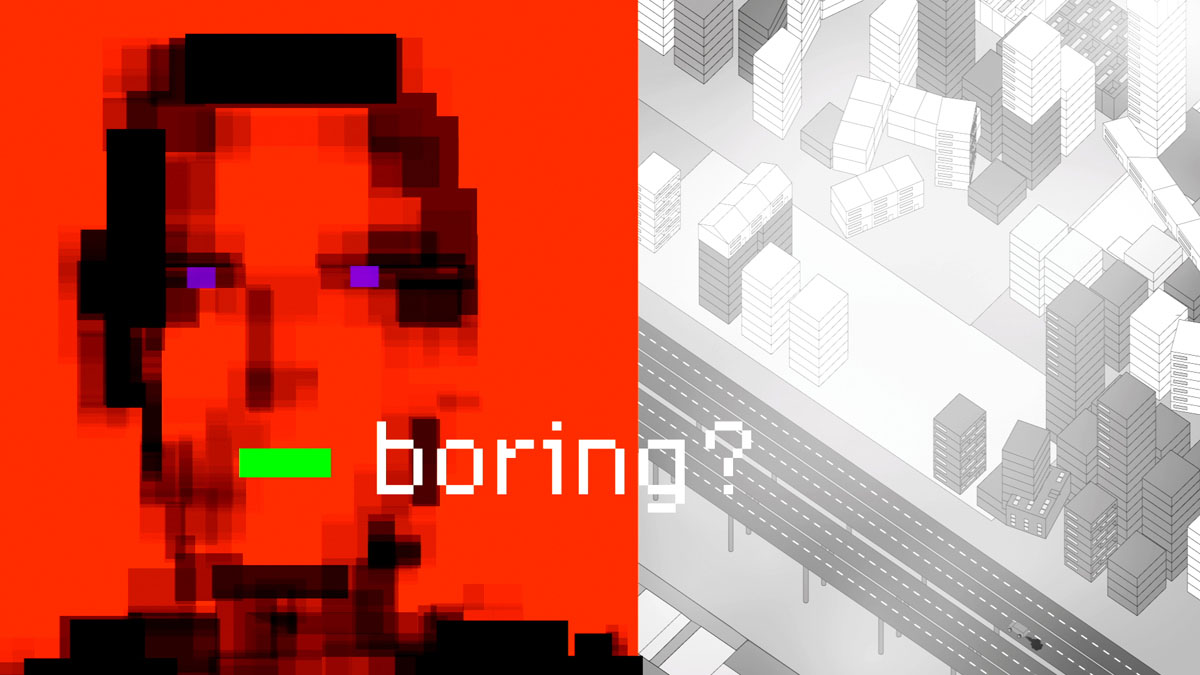
Both approaches shortly described above, of information technology (Smart City) and communication technology (Smart Citizen), stand in continuity with and correspond to competing urban concepts, each entailing different understandings of society.
It is instructive to look at the history of urban concepts through these two perspectives: on the one hand, the Modernist approach of social (urban) engineering and of control and ‘optimization’ of urban phenomena; on the other hand, acknowledging the planning traditions that rely on urban societies and on neighborhood communication as with Jane Jacobs and with Henri Lefebvre’s “Right to the City”.
On the one hand, historical urban development concepts focussing on functional optimization, for example to cope with the increasing traffic volume or to fight epidemics, have characterised approaches to the city before and beyond Modernism. And analogously, social concepts with functionalist interpretations of society describe the latter as a system composed of multiple integrated patterns and elements, based on the function they perform together.
On the other hand, process-oriented approaches to the urban entail an understanding of the city as negotiated and co-created. These urban models reflect social theory approaches, apprehending society as organically communicated and mediated as well as conflict perspectives of society focusing on competition of different groups and interests, emphasising complexity and negotiation and taking ongoing social change into account. Furthermore, such urban models focusing on interaction, reference symbolic interactionist sociological perspectives suggesting that shared meanings shape the behavior of individuals, and that social interaction produces and maintains such shared understanding, enabling cohabitation.
Acknowledging the socio-urban dimensions involved in the two approaches to urban technology mentioned above creates room for possibility for shaping the hybrid, the combined physical and digital, city. With the increasing pervasiveness of tech-tools caused by the today’s pandemic emergency, possible future options become clearer. When the lockdown measures will ease, when resuming activities “back to normal”, which normality would we choose? The one based on control? Would we tolerate the monitoring of our lives and the recording and evaluating of our movement profiles, contacts and health conditions?
Would we let giants like Google, with its parent-company Alphabet and its Toronto Sidewalk Labs, transform our urban environments into Smart Cities? And what happens when such a private player withdraws its responsibility to meet the most pressing urban challenges, as recently happened? What were the reasons for this, did the city and urban challenges prove to be particularly complex, and thus the expected exploitation of the data of the city users not sufficiently profitable?
With the awareness of how important digitization has proven for enabling participation in social life in these times of crisis, we have to consider possible models for a universal basic digital utility using Open Source solutions. And we must urgently question who owns our data, who uses them and for what purposes and how can we ensure their anonymization.
We have the possibility to choose. We do have a choice, as we could also follow an approach based on citizens’ dialogue. We could follow Barcelona’s process-oriented Smart Citizen approach to support social participative processes – which have generated urban innovations such as the “Superblocks Program”, with traffic reduction within clusters of city blocks. This would promote a problem-oriented approach to the urbanization of technology, focusing on existing problems of the city dwellers and committing to the goals of sustainable urban development.
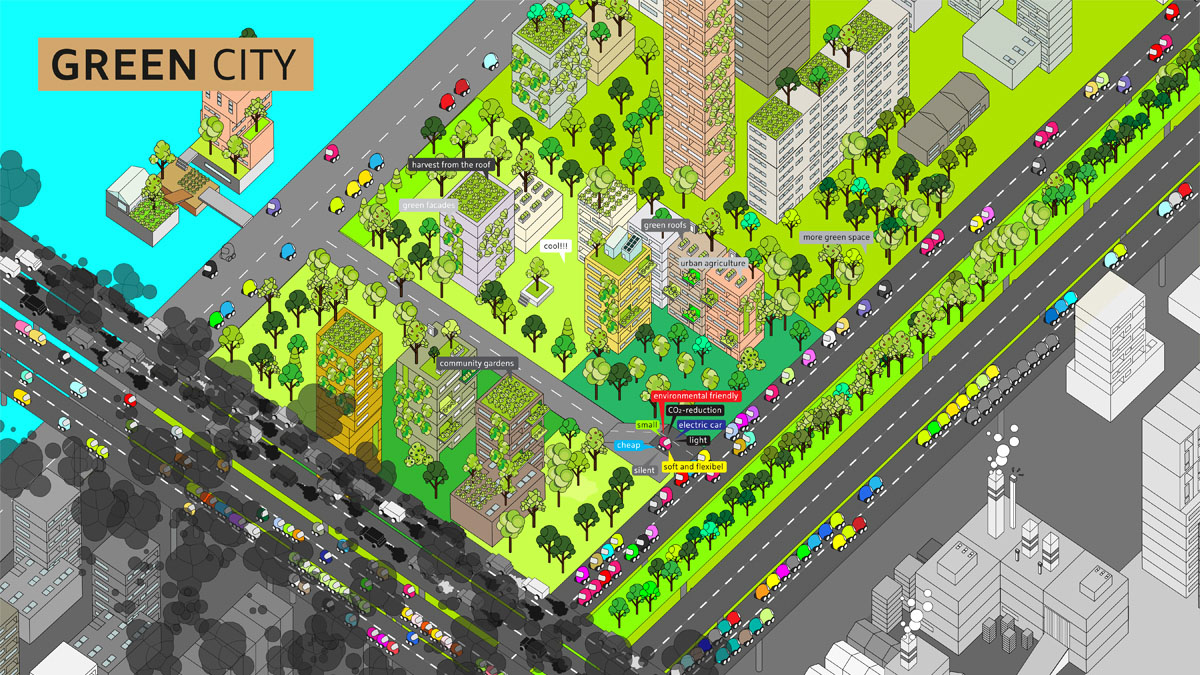
Digital transformation is raising many questions. The urbanization of technology is a dynamic process that requires continuous control, monitoring and reflection. How can these developments be socially processed in the interaction between civil society, experts and politics? What would be the best suited and most adaptive formats for this and how could the corresponding ‘process spaces’ reflect the complexity of physical urban society?
The access and participation in the digital spheres of non-digital-affine social groups should also be considered. The importance of this became very clear during the pandemic, with elderly fellow citizens, belonging to the risk groups, with comparatively insufficient digital skills as well as socially disadvantaged families without digital infrastructure, having no access to important health and education services and social life. How can we guarantee to “leave no one behind”?
One example is a project, launched to permanently bring local perspectives and civil society experiences to the digital transformation: the Kiez Lab, developed in the context of the Digital City Alliance Berlin. These district-based labs are designed as low-threshold and inclusive discursive formats, embedded in an urban context with physical neighborhood points of contact, and also as temporary laboratories in typical neighborhood facilities such as libraries, hospitals, old people’s homes, schools or parks.
Kiez Lab, integrated in the city and representing the urban society, are hybrid, combined physical and digital tools, to process digital transformation. The exchange on our common futures requires a broad social debate with new forms of hybrid dialogue between politics, science, business, culture and civil society, using physical and digital tools and communication spaces, in order to address the questions: how do we want to live together, and, crucially, in which cities?
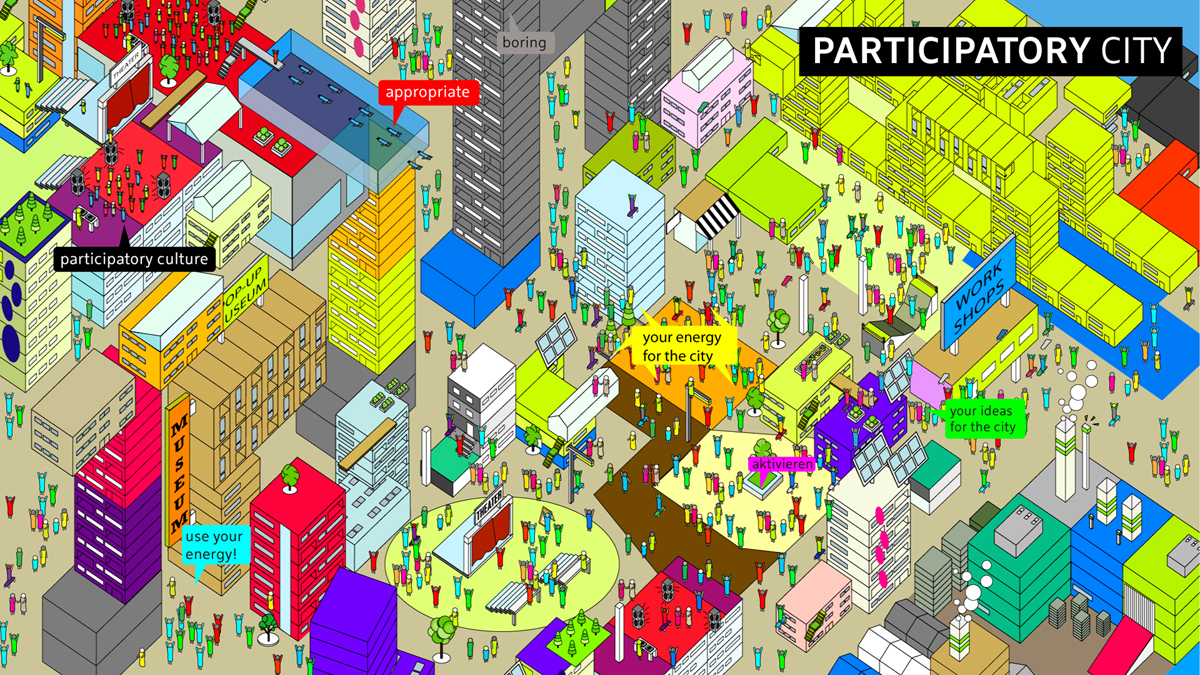
related PROJECTS
related NEWS
